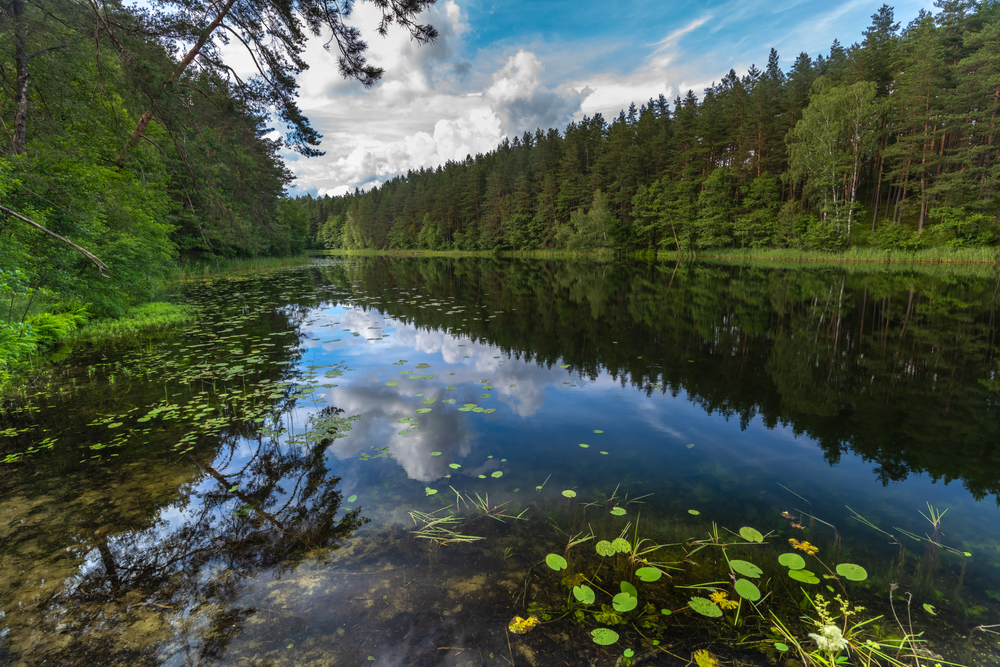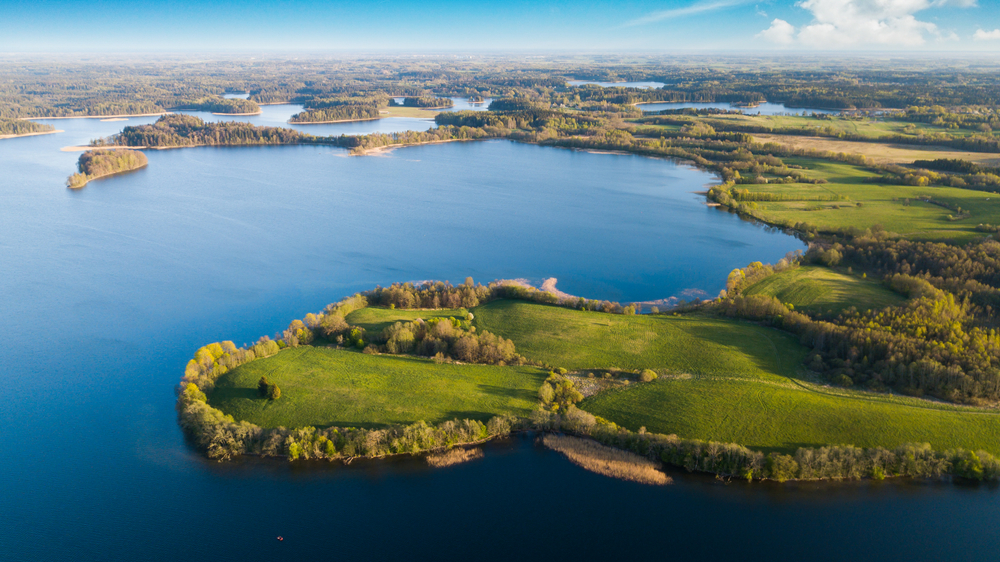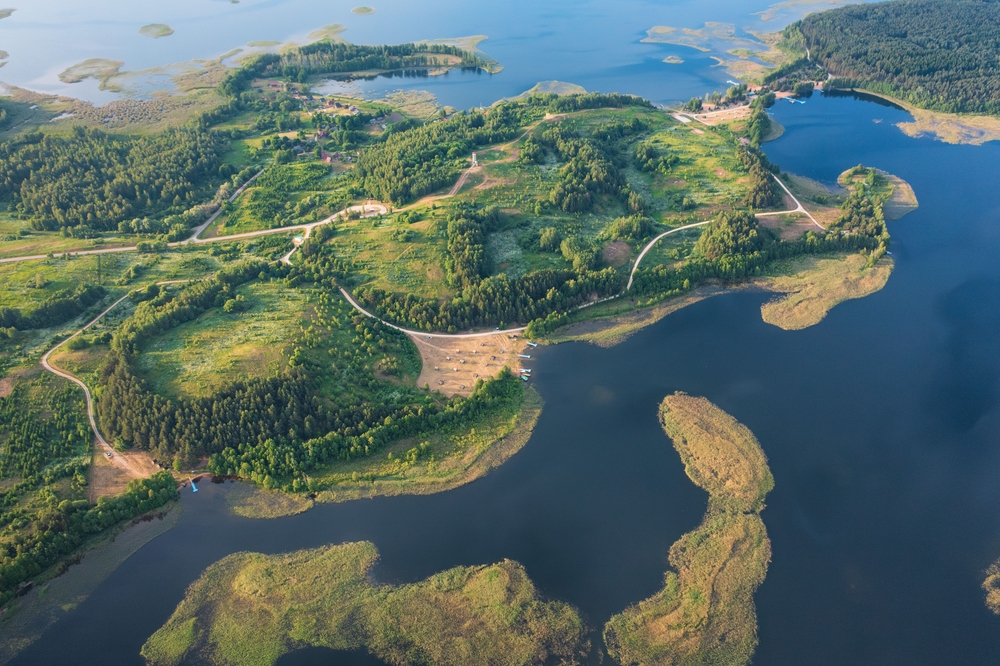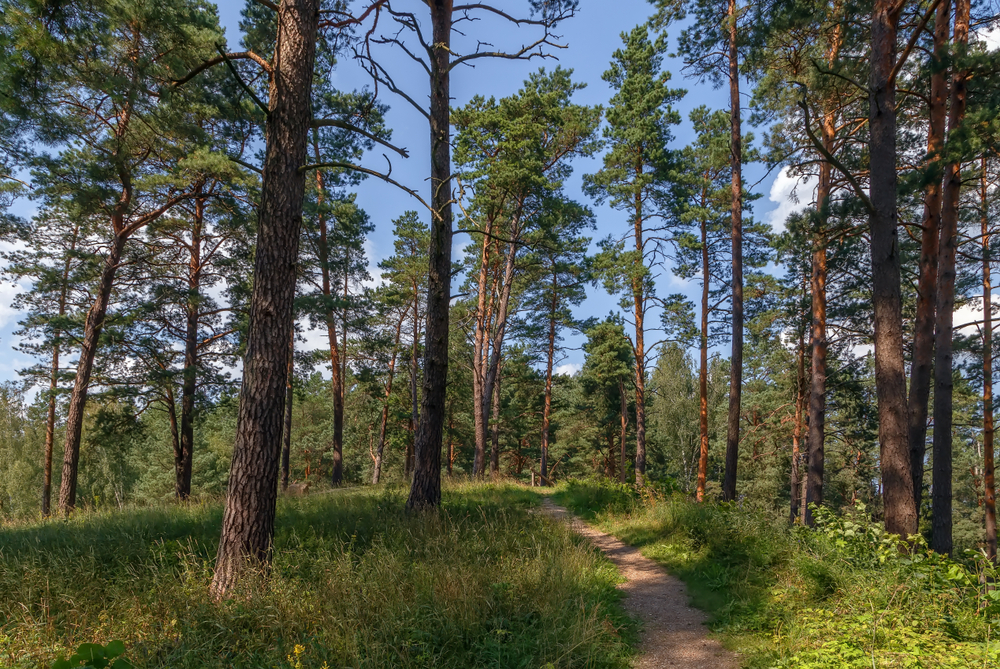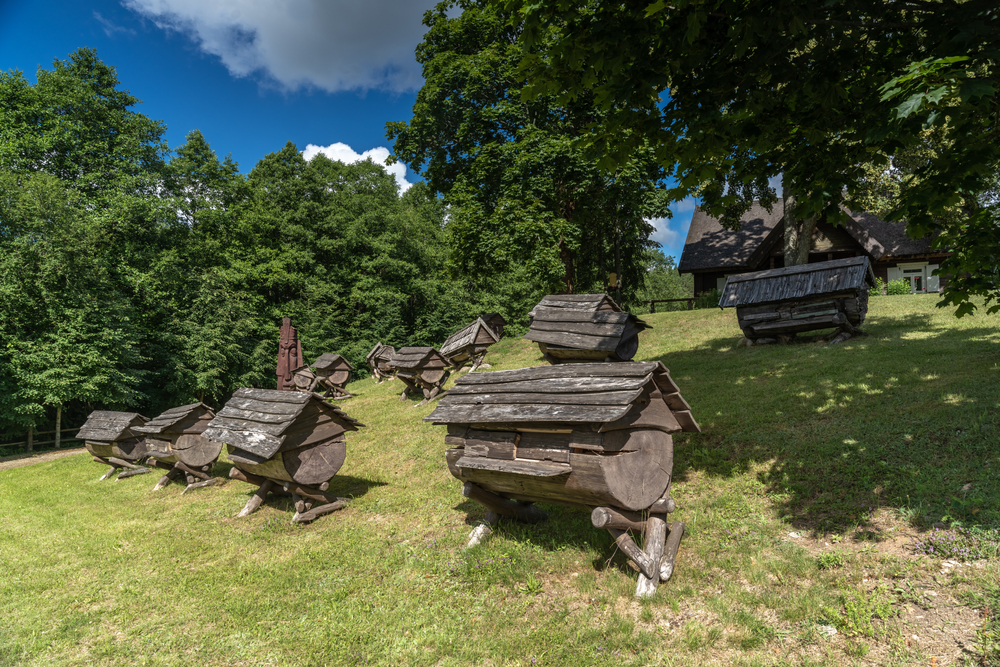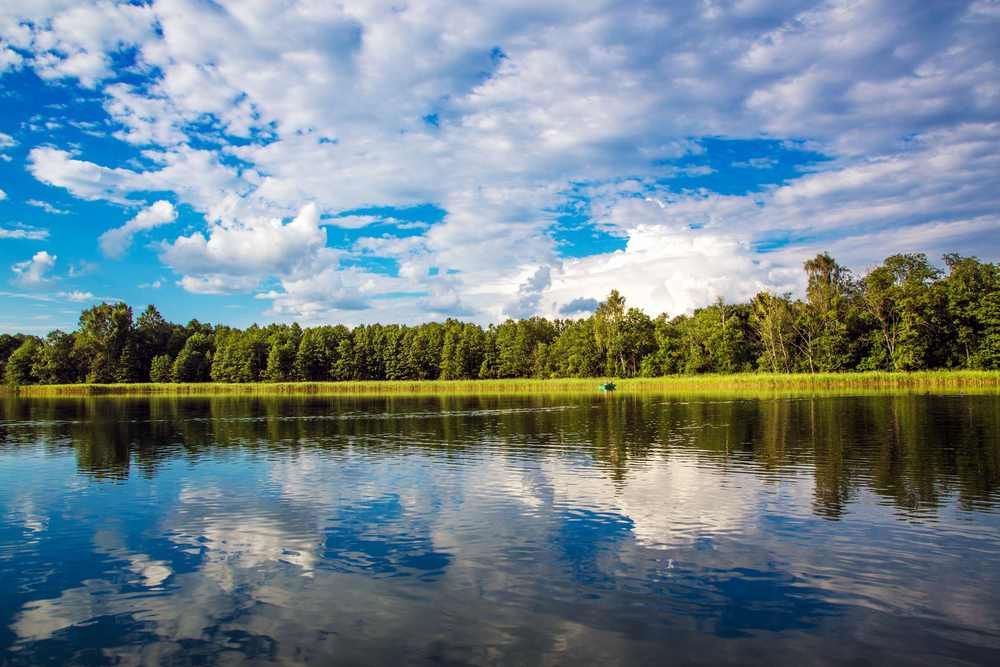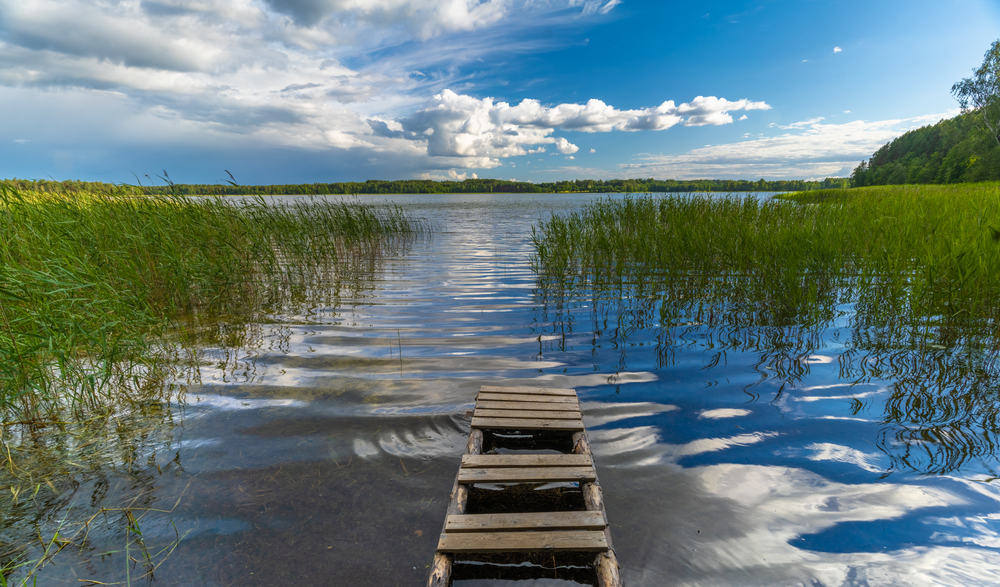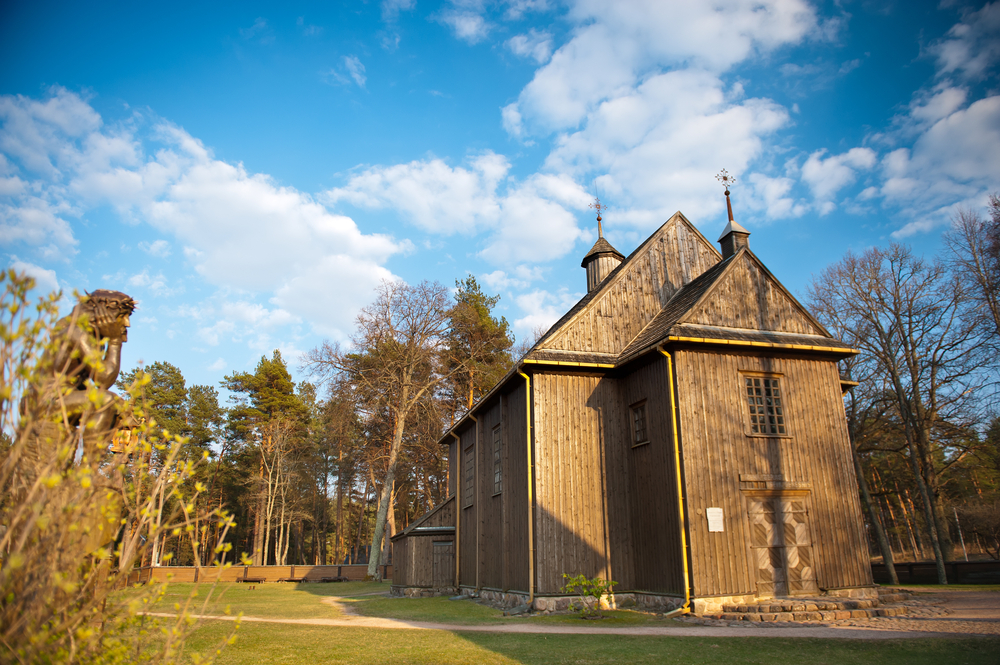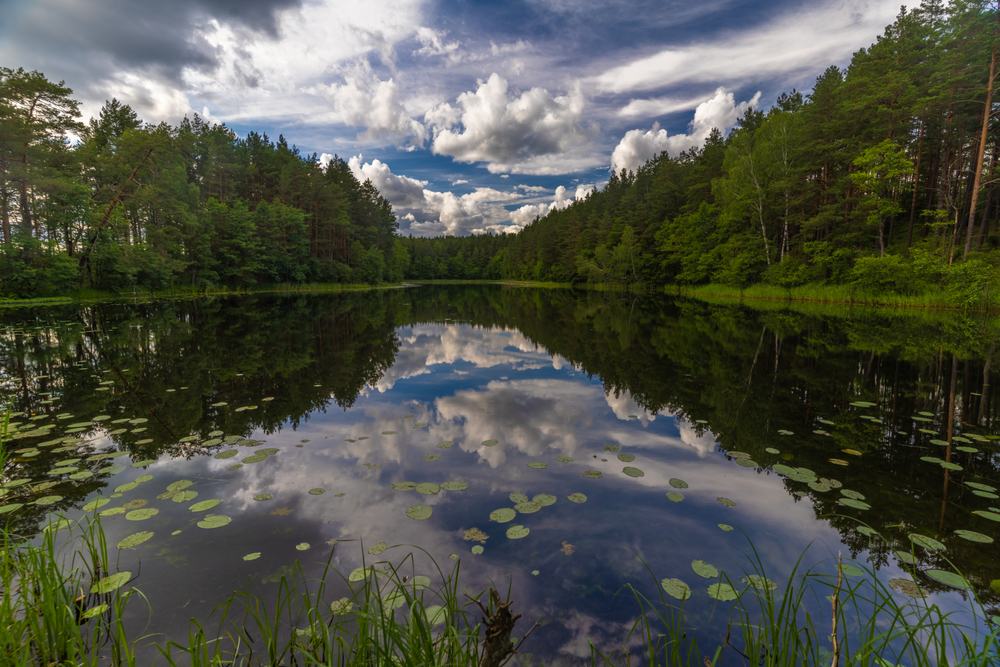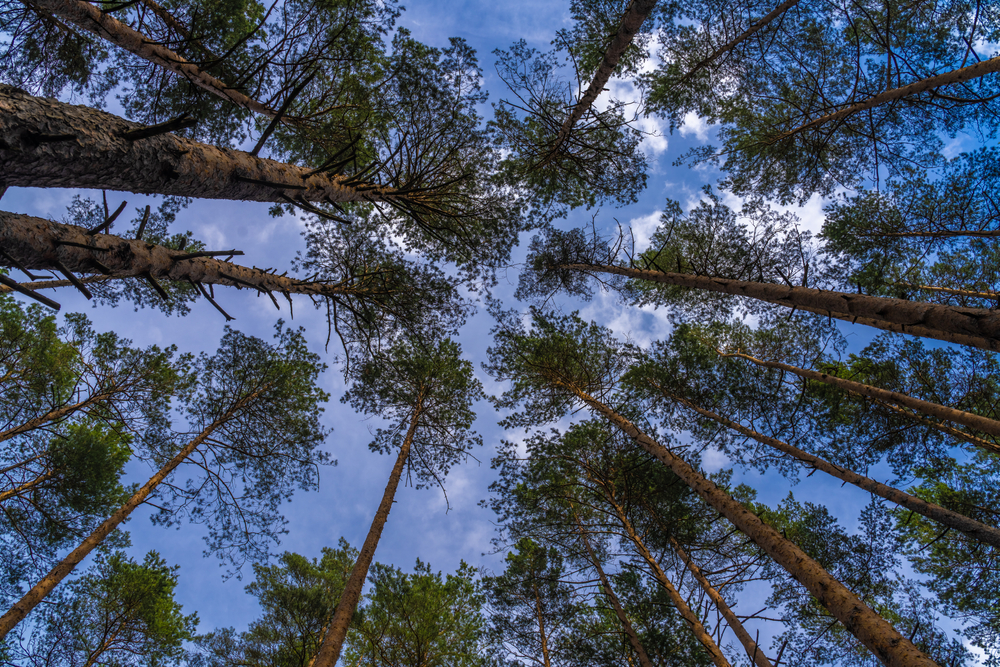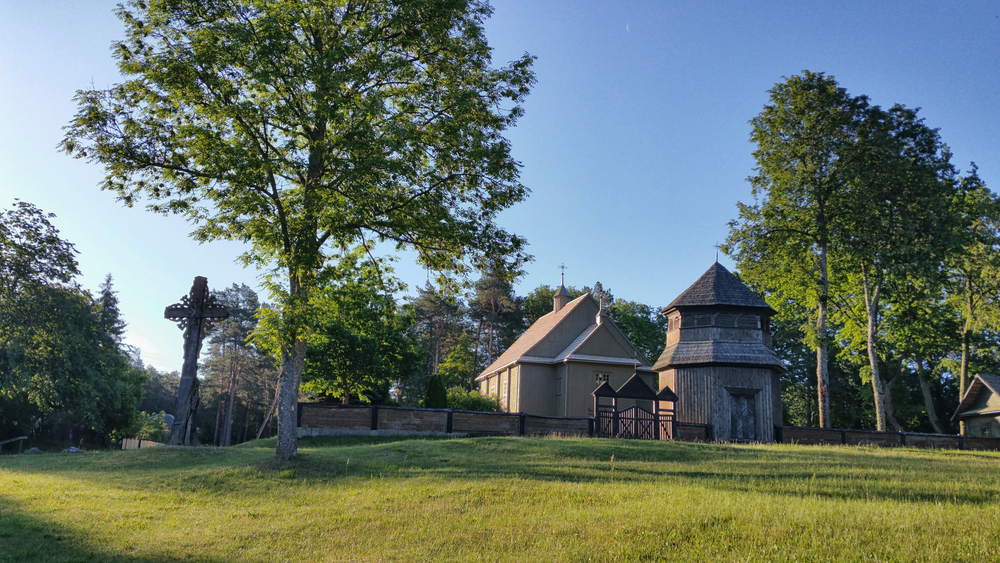Aukštaitija Overview
Aukštaitija National Park, or Aukštaitijos nacionalinis parkas in Lithuanian, is a remarkable natural preserve located in the northeastern region of Lithuania, about 62 miles (100 km) north of the capital, Vilnius. Covering an area of 156 square miles (405 square kilometers), the park was established in 1974 and is the oldest national park in Lithuania.
It is celebrated for its captivating landscapes, ancient cultural heritage, and exceptional biodiversity, making it one of the most popular destinations for nature enthusiasts in the country.
The terrain of Aukštaitija National Park is defined by its picturesque rolling hills, dense forests, and shimmering lakes. The park is often referred to as the “Land of Lakes,” as it boasts an impressive network of 126 lakes interconnected by rivers and streams. Among the most notable is Lake Dringis, the largest in the park, and Lake Baluošas, famous for its small island containing a unique natural spring.
The forests, primarily composed of pine, spruce, and birch, cover approximately 70% of the park and are interspersed with patches of bogs and meadows, creating a rich and diverse mosaic of habitats. Prominent hills such as Ladakalnis, which offers a breathtaking panoramic view of six surrounding lakes, add to the park’s scenic charm.
Aukštaitija National Park is home to an impressive array of wildlife. Visitors might encounter large mammals such as red deer, wild boars, and Eurasian beavers, which thrive in the park’s pristine wetlands. The elusive lynx and wolves also inhabit the deeper forested regions, although sightings are rare.
Birdwatchers will be delighted by the presence of over 200 bird species, including the white-tailed eagle, black stork, and Eurasian bittern. During the warmer months, the park’s lakes and rivers are vibrant with fish species such as pike and perch, supporting an intricate aquatic ecosystem.
The park is also known for its cultural and historical significance. The region features charming wooden villages such as Palūšė, home to one of Lithuania’s oldest wooden churches, built in 1750. Traditional craft workshops and local festivals celebrate the area’s rich ethnographic heritage, offering visitors a glimpse into the past.
Aukštaitija is dotted with ancient burial mounds, hillforts, and remnants of pagan worship sites, providing a fascinating journey into Lithuania’s pre-Christian history.
Visitors can engage with the park through a variety of activities. Canoeing and kayaking along its interconnected lakes and rivers is a favorite way to explore the water routes, while marked hiking and cycling trails allow for immersive adventures through forests and meadows.
Ladakalnis Hill and observation towers provide stunning viewpoints for photography and relaxation. The park’s visitor centers offer guided tours, wildlife observation, and educational programs that enhance the experience.
Aukštaitija National Park faces conservation challenges such as balancing tourism with habitat protection and combating invasive species. However, efforts by local authorities and international collaborations have yielded significant successes, including the preservation of rare species and the promotion of sustainable tourism practices. The park remains a testament to Lithuania’s dedication to protecting its natural and cultural treasures for future generations.
Park Map
Aukštaitija National Park Highlights
Engaging Aukstaitija National Park
Related National Parks More Lithuania
Sources
- Backpacking Adventures, Aukstaitija National Park, https://www.backpackadventures.org/aukstaitija-national-park/, retrieved August 2024.
- Best Trails, Aukstaitija National Park, https://www.alltrails.com/parks/lithuania/utena/aukstaitija-national-park, retrieved August 2024.
- Birding Places, Aukstaitija National Park, https://www.birdingplaces.eu/en/birdingplaces/lithuania/aukstaitijos-national-park-botanikos-takas, retrieved August 2024.
- True Lithuania, Aukstaitija National Park, https://www.truelithuania.com/lakes-of-aukstaitija-national-park-3879, retrieved August 2024.
- Wikipedia, Aukstaitija National Park, https://en.wikipedia.org/wiki/Aukštaitija_National_Park, retrieved August 2024.








































































